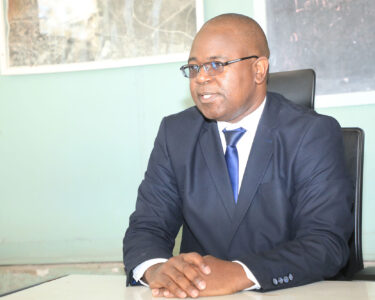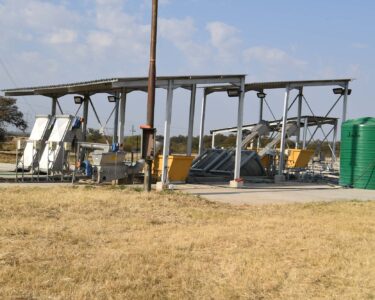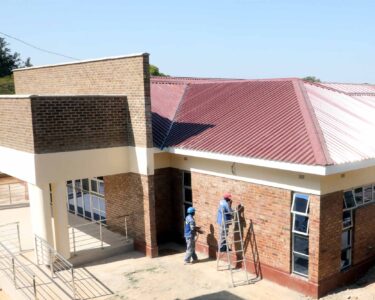Manicand Province, located in the Eastern Highlands of Zimbabwe, is the country’s second most populous province after Harare Metropolitan. It is renowned for its breathtaking scenery complemented by eye-catching mountains that give the province its unique panoramic views. Even more intriguing is the fact that Manicaland boasts all 5 of Zimbabwe’s agro-ecological regions. However, it has had its fair share of calamities in recent years, the worst probably being Cyclone Idai, which killed hundreds and left thousands more homeless in March 2019.
In this wide-ranging interview with our Editor-in-Chief, the Secretary for Manicaland Provincial Affairs and Devolution, Edgars Seenza, outlines some of the features that make the province tick. He talks at length about some of the challenges facing the province and why Chimanimani has not yet fully recovered from the devastation wrought by Cyclone Idai. He also laments the province’s low Gross Domestic Product (GDP), despite Manicaland accounting for the lion’s share of the country’s diamond deposits.
Despite the challenges, Seenza is confident that Manicaland Province will soon be flying high. The provincial affairs and devolution secretary derives his optimism from the fact that scores of sons and daughters of Manicaland are coming back home to invest. In many respects, Seenza believes the province is at the forefront in answering President Mnangagwa’s clarion calls for beneficiation and value addition. Below are the edited excerpts . . .
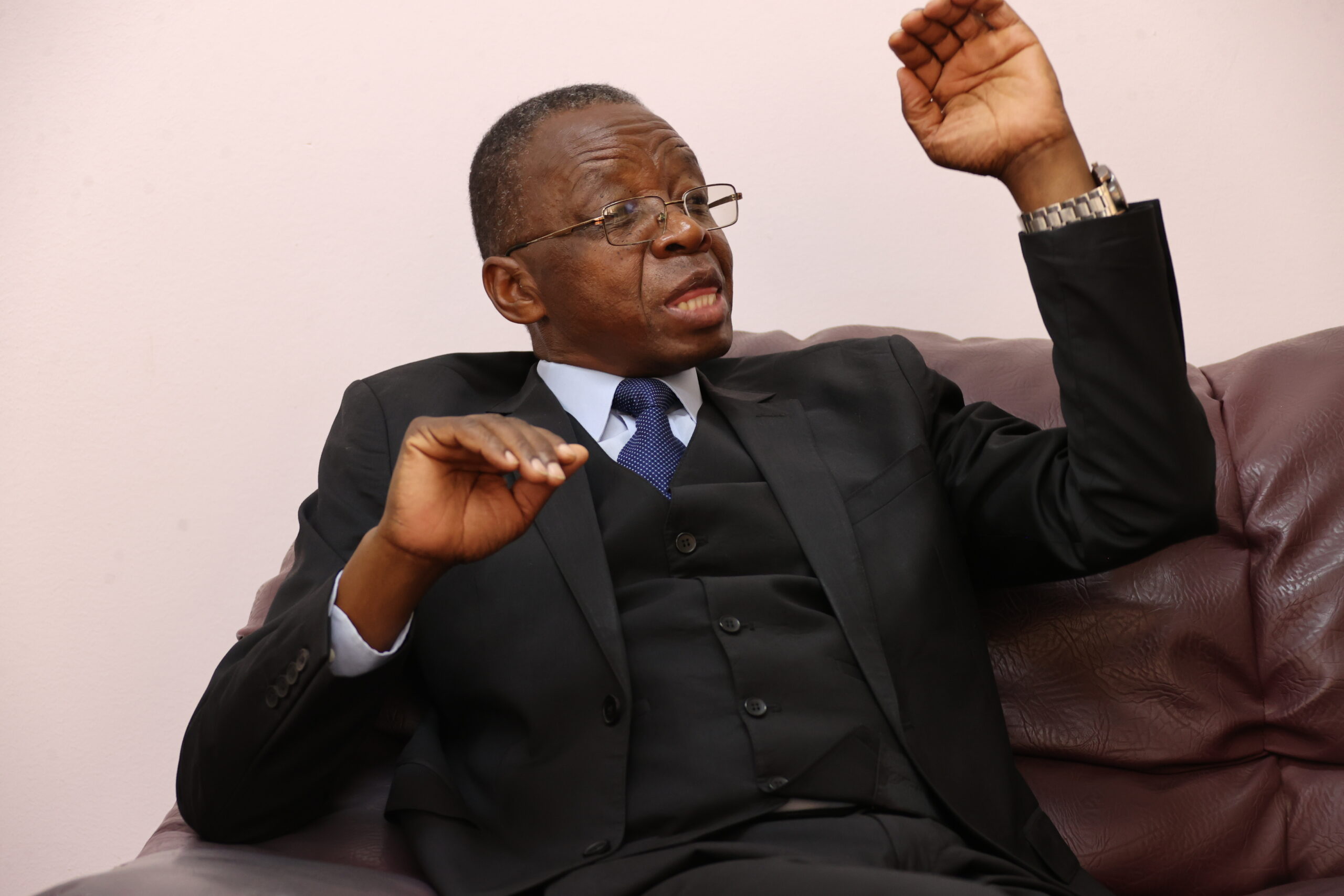
Question: Can you give us a brief profile of Manicaland Province in terms of its population, districts and area covered?
Answer: Manicaland Province has 7 administrative districts with 10 local authorities. This means there are 3 districts each with 2 local authorities. There is Mutare, with Mutare City Council and Mutare Rural District Council. We have Makoni, with Rusape Town Council and Makoni Rural District Council. Then there is Chipinge with Chipinge Town Council and Chipinge Rural District Council. The rest of the districts — Buhera, Chimanimani, Mutasa and Nyanga — each have 1 local authority.
According to the 2022 Population Census, Manicaland has slightly over 2 million people, which makes us second only to Harare Metropolitan Province. The high population has far-reaching ramifications on the province’s GDP standing. However, we cannot use that as an excuse because the human resource factor is a critical driver for economic development. It’s something we should take advantage of in promoting Manicaland as the ideal investment destination.
Manicaland Province is bordered by Mozambique to the east, Mashonaland East Province to the north and Masvingo Province to the west. And, thanks to its diverse topography and climate, Manicaland has the unique advantage of being home to all 5 of the country’s agro-ecological regions. We take pride in the fact that Nyanga is called “Little England”. There is also a “New England” in Chipinge and a place called Himalaya in Zimunya communal lands, named after the Himalayas in Nepal, home to Mount Everest.
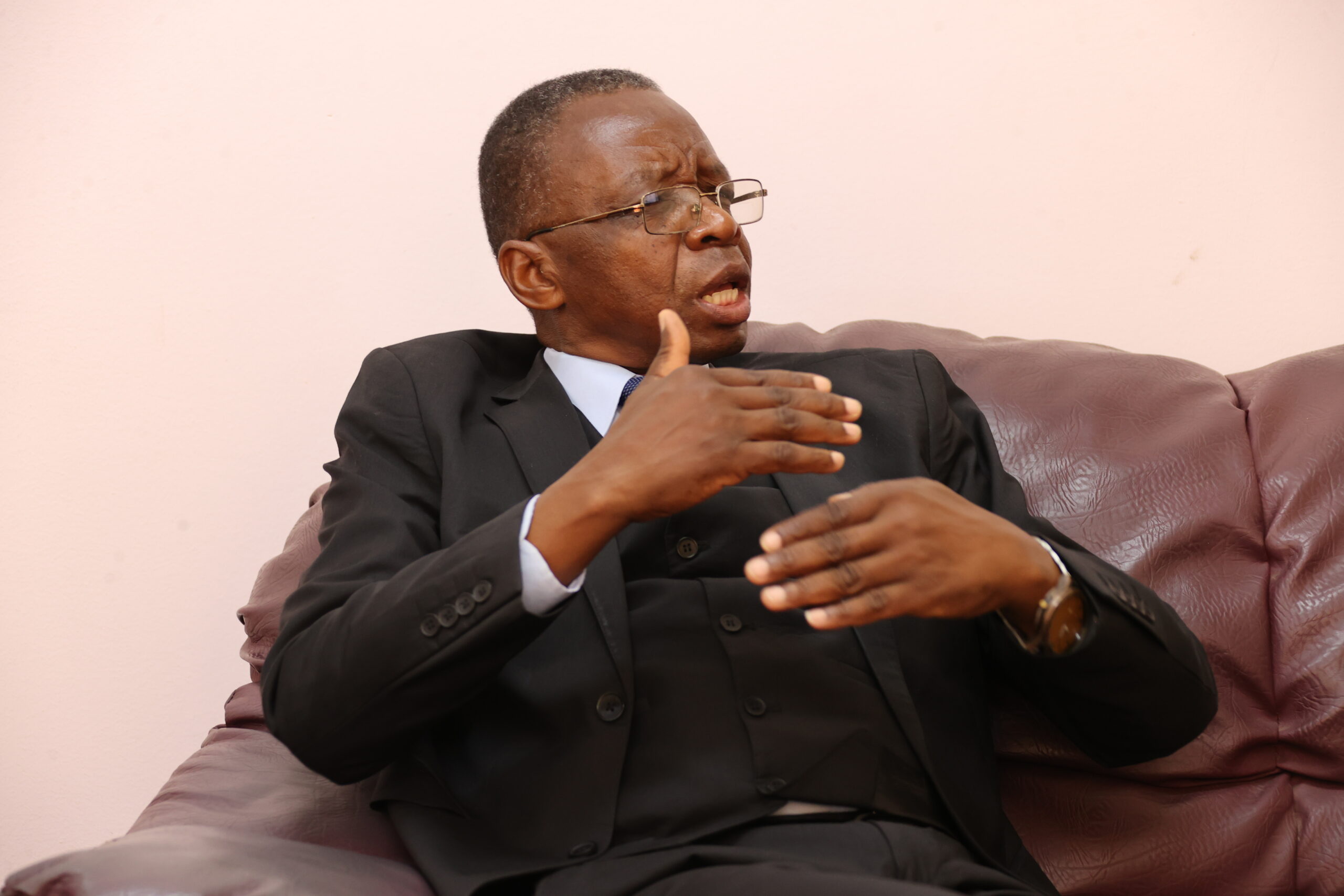
Q: What would you say makes Manicaland Province unique?
A: The co-existence of all the country’s 5 agro-ecological regions certainly makes us unique. Take our forests, both indigenous and exotic, it’s hard to find them in any other province. Nyanga is not only a tourist paradise, but the No. 1 producer of seed potatoes. Manicaland is also No. 1 in diamond mining and the production of macadamia nuts.
We also have the Nyangani Mountain, Zimbabwe’s tallest peak. Of course, it has its dark side, linked to the disappearance without trace of all those who violate local customs from which the mountain derives its sacredness.
More importantly, Manicaland Province is now the entry point of choice in terms of access to the Indian Ocean. In fact, plans to transform Forbes Border Post into a modern hub are at an advanced stage. We are going to share our vision with our Mozambican counterparts as part of our efforts to ensure buy-in from diverse stakeholders.
If you cast your mind back to the liberation struggle, you will notice that this is one of the provinces which bore the brunt of the Second Chimurenga because of its proximity to Mozambique. Although accurate figures are hard to come by, Manicaland probably has the highest number of war veterans, both living and dead. I think the size of our Provincial Heroes’ Acre bears testimony to that fact.
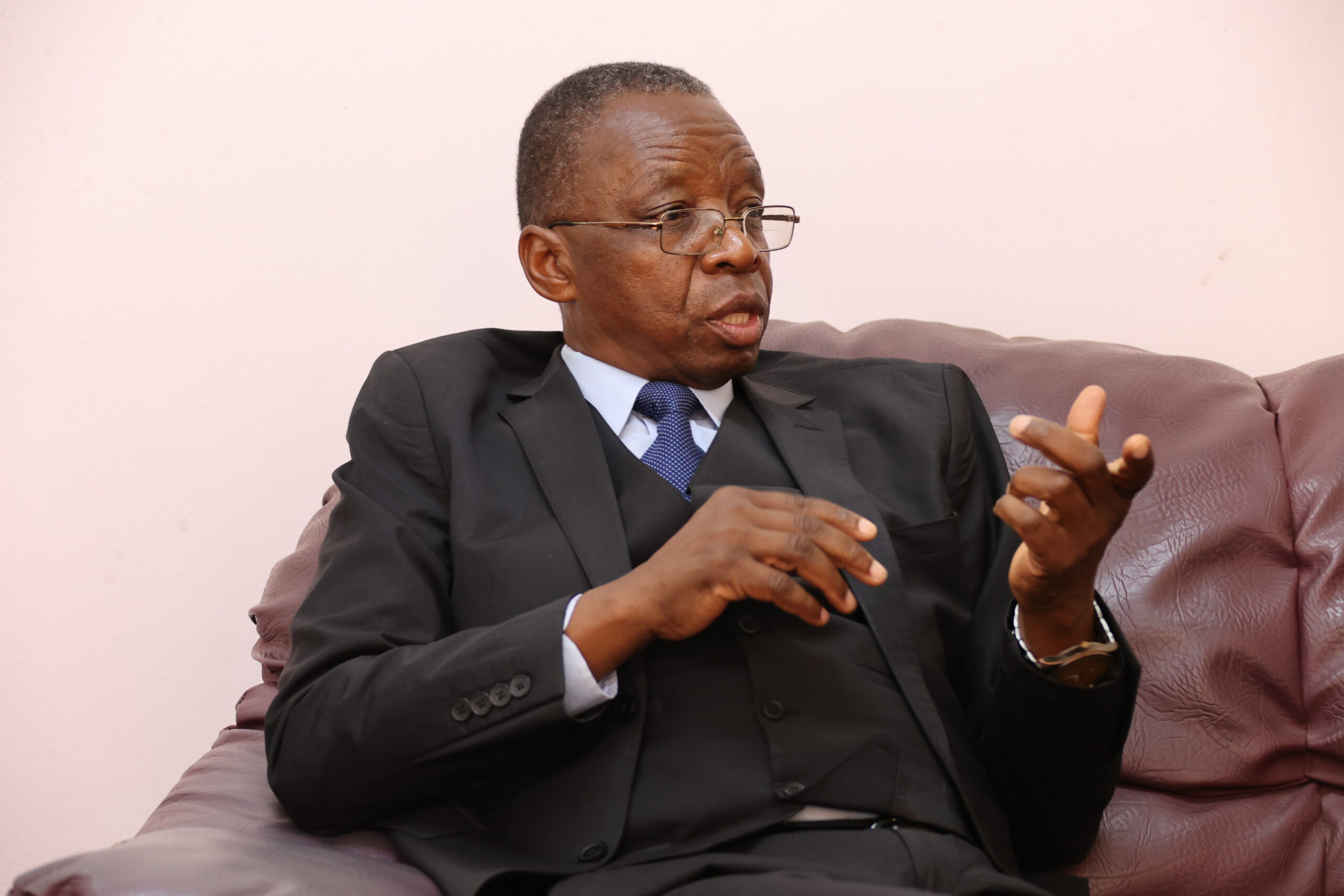
Q: In terms of developmental projects over the past 5 years, can you identify those that you consider as the highlights for the province?
A: I prefer to look at the projects district by district, so that I don’t overlook some of them. For starters, Chipinge is home to ethanol giant Green Fuel, which has transformed the livelihoods of thousands of families. The project is still in expansion mode in terms of increasing the sugarcane hectarage.
Besides ethanol, Chipinge is now making a name for itself as a leading producer of macadamia nuts. To add value to the macadamia nuts, a processing plant is being constructed in Chipinge by an indigenous investor, Mahemu, previously based in the UK. Demand for macadamia nuts is on the rise worldwide and ZimTrade, the export promotion body, is currently on an aggressive marketing drive on behalf of local growers, particularly in the UK and the Netherlands. Until now, the bulk of our macadamia nuts were destined for China, but this is no longer the case.
Also high up on Chipinge’s agricultural portfolio are avocados. The avocado is a very lucrative crop and Tanganda Tea Company and scores of smallholder farmers have embarked on its production on a large scale. In this regard, a packaging shed has been established at Junction Gate in Chipinge.
Although Chipinge plays second fiddle to Chimanimani in terms of banana production, it is not too far behind. The Chipinge bananas project is doing quite well in terms of meeting the needs of both the local and export markets.
Chipinge is also synonymous with tea production, with Tanganda Tea Company ruling the roost, thanks to its flourishing 4 estates. However, depressed tea prices on the global market have had a knock-on effect on Tanganda’s balance sheet. As a result, the Zimbabwe Stock Exchange-listed company is now turning increasing attention to macadamia nuts. But since our tea is quite popular overseas, we have been holding regular meetings with the company not to abandon tea production altogether. Rather, the onus is on us [the provincial administration] to see that more land is opened up for macadamia production instead of sacrificing the existing tea plantations.
Chimanimani’s main claim to fame are its timber plantations, whose ownership is shared by 3 of the country’s biggest timber companies, notably Allied Timbers, Wattle Company and Border Timbers. Allied Timbers runs a sawmill at Cashel, which was commissioned by His Excellency, President Mnangagwa, on 22 July 2022.
Like its “sibling” Chipinge, Chimanimani is also heavily into macadamia nuts production. In the hot beverages sector, Chimanimani farmers have opted for coffee as opposed to tea.
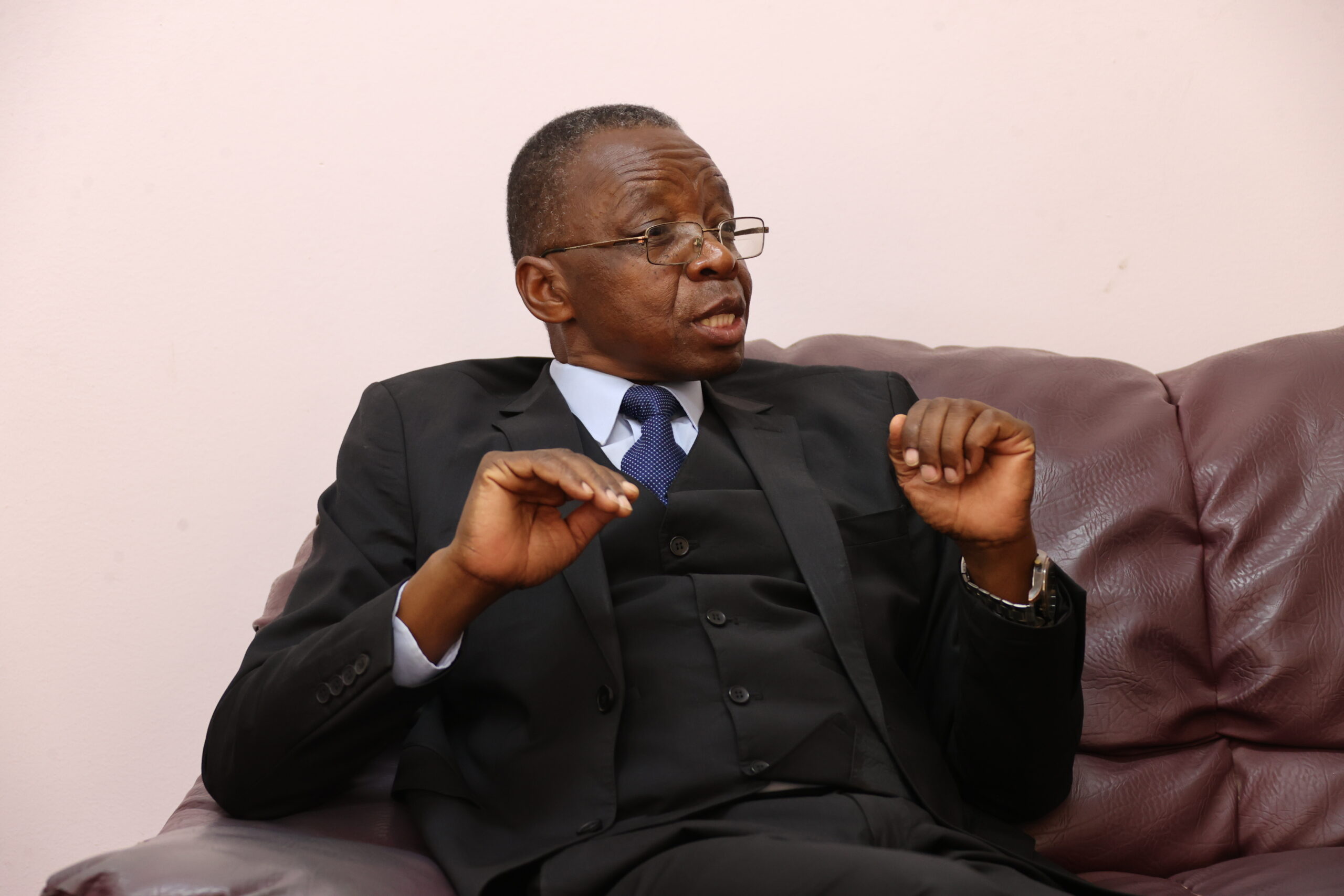
Diamond mining, under the auspices of the Zimbabwe Consolidated Diamond Company (ZCDC) is also high up on Chimanimani’s table of economic activities.
However, if I were to summarise Chimanimani’s economic activities in just 5 words, then it would be bananas, bananas and more bananas. I am sure that, in a nutshell, sums up why government prioritised the tarring of the Jopa-Kopa Road to minimise disruption in the movement of bananas to the market. Bananas are the lifeblood of Chimanimani and that helps explain why, even in the aftermath of Cyclone Idai, the majority of families are reluctant to leave their homes.
Mutare is not only Manicaland’s provincial capital, but also the birthplace of fast expanding FMCG giant Mega Market. It is also home to Wattle Company-owned kiln and veneer plants which were commissioned by President Mnangagwa in May 2021.
One of the Second Republic’s goals is to minimise imports of basic commodities, such as cooking oil. And Willowton has stepped up to the plate as a leading manufacturer of both cooking oil and bath soaps.
Dorowa Mine, in Buhera District, has been known for years as the leading producer of phosphate, a key ingredient in the manufacture of fertilisers. While Dorowa’s fortunes have taken a dip in recent years, Sabi Star Mine’s star has been on the ascendancy in the wake of the discovery of lithium deposits. Dubbed “the new oil”, lithium is set to catapult Buhera – and the country — into the realms of the First World.
On the other hand, Mutare Rural District — Marange, to be more precise — is the new Kimberley, thanks to the discovery of diamonds at Chiadzwa. The world over, the exploitation of diamonds is a game-changer. This is why we are now working on establishing a School of Mines at Fern Hill on the city’s outskirts, which will help us to ring-fence our diamond wealth. The perimeter fencing and precast wall are already in place. All we are awaiting is the release of funding for the construction of the administration block, lecture rooms and offices.
However, there is more to Mutare Rural District than just diamonds. There is gold, too, but in much smaller deposits than in the traditional gold mining areas. Mutasa District fares better in this regard.
However, all said and done, Mutasa District is more into agriculture than mining. “Pick of the crop” is La Rochelle Organics, which grows (with the help of contract farmers), processes and packages a variety of medicinal plants (and chillies) mostly for the export market. Ironically, Germany – the home of pharmaceutical giants such as Bayer – is one of La Rochelle’s niche markets.
I must say Mutasa people are quite innovative when it comes to their business acumen. Did you know that you can make flour from bananas? Yes, bananas. I wasn’t aware of this myself until I sampled a wide range of confectioneries baked with banana flour during an SMMEs exhibition in Bulawayo.
Manicaland is a tourist paradise. In fact, the list of iconic tourist attractions defies description. One of these is the Mutarazi Falls Skywalk, a feature you will be hard pressed to find anywhere else in the world. It would be a money-spinner under normal circumstances. But it is not generating as much revenue as it should because of the high fees. The fees are beyond the reach of the majority of local folk. It is our plan to engage the hospitality industry to review the fees as part of our drive to boost domestic tourism.
Another drawback is the poor road network leading to some of tourist destinations. The road leading to Mutarazi Falls, for example, is in particularly bad shape, but rehabilitation works are in the pipeline.
Meanwhile, new world-class standard lodges are going up at the Mountain Lakes Resort and Spar in Nyanga District. These are the brainchild of another “son of the soil”, Chamunorwa Shumba, the founder of mobile telecoms firm G-Tel. While the lodges are a welcome development, we feel Manicaland is lagging behind when it comes to spacious conferencing facilities. Here, I am talking about mega facilities with a capacity to accommodate up to 1,000 delegates or more. Is it any wonder that we are losing out to Victoria Falls despite our beautiful hotels, pleasant weather and breathtaking scenery. We want to change that narrative.
Other projects include a sports academy in Makoni District, the brainchild of Kwekwe-based but Rusape-born businesswoman Melody Nemadire.
Also deserving mention is Romsley Irrigation Scheme, which has the potential to become one of the top irrigation projects in the country. Several centre pivots have already been mounted and the villagers are really excited and raring to go.
Recently, I accompanied the Minister [of Provincial Affairs and Devolution] on a working visit to Port Elizabeth, South Africa. The main purpose of our visit was to study the city’s devolution and decentralisation model. It was quite an eye-opener. The provincial leadership has set up a board which is tasked with employing a chief executive officer who will, in turn, engage competent/qualified to drive the city’s vision.
Called the COEGA Development Corporation, the board’s main function is to spearhead development in Special Economic Zones (SEZs). The corporation puts in place all the necessary infrastructure, such as roads, water supply, electricity as well as disaster management systems before leasing the SEZ facilities to investors. We met quite a number of Zimbabweans working there who want to come back home. To walk the talk, we are now mulling the establishment of the Manicaland Development Association (MDA) as part of our ongoing efforts to lure investment
As a province, we are still in tentative talks with COEGA on the construction of a new one-stop border post south of the Forbes Border Post on a build, operate and transfer (BOT) basis. Despite the mountainous terrain, COEGA are confident that they will be up to the task. The project is still in the pending basket as we await buy-in from our Mozambican counterparts.
This brings me back to Mutasa District, where the Eastern Highlands Plantations and Arda Katiyo have agreed to jointly fund the construction of a bridge across Rwenya River to create the Katiyo Border Post. The new border post will slash the distance to the Port of Beira by about 100 km. The designs for the bridge are complete. We are now waiting for input from our Mozambican counterparts on the way forward.
[Editor’s note: The new Rwenya Bridge has since been commissioned by President Mnangagwa.]
Q: In a 2021 report on the compendium of projects implemented by the Second Republic, Manicaland Province came second highest in terms of the number of completed projects — 84 in total. Were you happy with your performance?
A: We are not exactly happy to come second best. There is a lot that is happening in this province which was not captured in the report. The main reason for this anomaly is that some investors, especially in the farming areas, have been playing hide and seek with the local authorities.
We have quite a number of Diasporans who are investing back home thanks to the comparative advantages that we enjoy as a province. This is what is attracting investors to this province. However, I feel we can do more, much more, given the vast opportunities available here. We can certainly do more. That is why I am saying, second place is not good enough for a province like Manicaland with its unparalleled endowments.
Q: What is Manicaland Province’s Gross Domestic Product (GDP) and how much is the province contributing to the national GDP?
A: For us, GDP is quite a sensitive subject because ultimately it depends on how the figures are arrived at. According to the 2021 GDP report (we are still to get the 2022 report), our GDP was around 20 billion Zimbabwean dollars (or around US$2.5 billion) in constant prices. Our target is to grow our GDP to around US$10 billion by 2030 at the rate of 5% per annum. We believe this will go a long way in helping us achieve our 2030 vision at both provincial and national levels.
Q: Since coming into office, President Mnangagwa has been calling for value addition and beneficiation. How has Manicaland fared in this regard?
A: I think we still have a long way to go in that regard. That is one of the main reasons why our GDP is not what we would like it to be. I am on record as saying our GDP figures are not a true reflection of what is happening on the ground in Manicaland.
Let me cite the Chiadzwa diamonds as an example. According to the official figures, diamond revenue is conspicuous by its absence. In other words, Chiadzwa diamonds are contributing ZERO to Manicaland’s GDP. All the revenue is credited to Harare, since some of the companies operating in Manicaland have their head offices there. But it’s not just the diamonds alone. Allied Timbers owns timber plantations in Chimanimani, whose timber is processed into building materials and other value added products in Harare.
The same applies even to tourist facilities. Chilo Lodge on the southern tip of Manicaland, in Chipinge District, is a case in point. Tourists make their bookings in Harare but use Chipinge as a gateway to Gonarezhou National Park, which falls under Masvingo Province. Yet parts of Chipinge remain underdeveloped despite its juxtaposition to the park.
It also happens that there are loopholes in data capture at ZimStat, the national statistics body charged with computing GDP and other data. It boggles the mind that there is no record of a company with international connections like La Rochelle Organics in the ZimStat database. I am sure you can now begin to understand why we feel shortchanged as a province GDP-wise.
Q: So what are you going to do about it?
A: For starters, we are going to lobby the local business community to declare the value of their goods and services right here in Manicaland. We are going to do this in collaboration with ZimStat.
The long and short of it is that we are going to focus on value addition going forward. We want to make sure that whatever we produce, we add value to it within Manicaland. That means our timber should be processed here. The same with our agricultural produce. That is why we have given the greenlight for the construction of a macadamia nuts processing plant in Chipinge. Plans are also afoot for the establishment of dairies there. A banana processing plant is also envisaged at Hauna to plug revenue leakages associated with the sale of the fruit straight from the plantation. That’s the way to go if we are to grow our GDP.
Q: The President is also calling for rural industrialisation. What steps have you taken to ensure that Manicaland responds to this clarion call?
A: First and foremost, we are quite excited by this call because it is going to expedite our value addition programme as a province. For your information, we have quite a number of investors keen on setting up industries in Manicaland’s rural areas. There are quite a number of pull factors in this regard, notably a large human resources pool and unlimited water supplies.
Associated Foods Zimbabwe, manufacturers of the Mama’s range of FMCG products, was among the first to heed our call for investors to set up businesses in the rural areas. Perched high up in the Vumba Mountains, Associated Foods took advantage of the relatively cheap land, abundant water supplies and an inexhaustible labour pool. This is the way to go and we actively promoting that.
Remember, too, that Manicaland has a reputation for growing tomatoes, particularly in our irrigation schemes. Unfortunately, some of the tomatoes never make it to urban markets due to logistical challenges. So why can’t we process these tomatoes into value-added products like tomato puree, tomato paste ore tomato sauce right there at the source?
Going forward, our focus is to encourage our smallholder farmers to grow crops in line with their respective agro-ecological regions. It’s called ecological cropping. Thus, a farmer in Buhera must ask him/herself what is the best crop suited for that area. The same with Chimanimani, Chipinge, Nyanga, etc. Potential investors will leverage on that information to make their investment decisions.
Q: In 2019, some areas in Manicaland, like Chipinge and Chimanimani were hit by Cyclone Idai. How is the situation on the ground now? Have the communities fully recovered from the tragedy?
A: Yes, I think the communities have, more or less, recovered. And kudos to the government for funding the recovery programme. Unfortunately, a number of missing persons are still to be accounted for nearly 4 years after the tragedy. However, the Ministry of Local Government [Public Works], in collaboration with various stakeholders has been to Mozambique to exhume the remains of those Zimbabweans who were swept away by the cyclone-induced floods. I am happy to say the exhumation exercise is now complete. Samples from the recovered remains are now undergoing DNA tests. However, it now turns out that the number of cyclone victims “dumped” in Mozambique is much lower than originally estimated. We are still waiting for guidance from the Ministry of Local Government and Public Works on the way forward.
I believe it is time we brought closure to this tragedy because the victims’ surviving families are living in limbo. For example, they cannot claim employment, insurance or other benefits in the absence of a death certificate.
Q: So exactly how many people are still missing?
A: At least 158.
Q: And when the teams went to Mozambique how many bodies were recovered?
A: There’s no precise figure. All I know is that around 100 bodies were recovered. But there is nothing, so far, to indicate that they are all Zimbabwean nationals. Some of them could be Mozambican nationals. Only DNA results can establish accurate information.
Also, given the magnitude of the tragedy, it is extremely difficult to establish a victim’s identity. Remember, some of the victims were crushed beyond recognition by massive boulders dislodged by landslides. Who knows, some of the remains could have been ended up in the ocean? As part of our search and rescue efforts, we even used sniffer dogs from South Africa and earthmoving equipment, but with limited success.
Q: What do you think is going through the minds of the cyclone survivors, especially those who are still missing their relatives?
A: They must be going through a very tough time, psychologically. This is why we have seen it fit to offer psycho-social support to them. This is an on-going exercise and is targeted not only to those who are missing their relatives, but our own government staff as well. In fact, so traumatised were some of the civil servants that they have requested transfers to other provinces.
It will take quite some time for the survivors to forget. Actually, I am not sure whether they will ever forget because Manicaland is close to Mozambique and the Indian Ocean. As soon as the people of Chimanimani see storm clouds gathering on the horizon, they are immediately on the phone asking: “Are we safe?” In turn, I phone the Meteorological Services Department for updates which I then use to pacify my callers.
Q: A few months ago Brick by Brick magazine was in Chimanimani/Chipinge to cover the rehabilitation of the Kopa-Jopa Road. We saw scores of villagers who are still living literally in the “shadow of death”, i.e. at the foot of mountains. Are they safe? Why have you not resettled them elsewhere?
A: The families there derive their livelihoods from growing and selling bananas. That is why they will not budge. We have relocated some of them to relatively safer areas like Runyararo only for them to retrace their footsteps back to their ancestral homes. Until such a time we can make their proposed new homes more attractive for them to earn a living, they will continue to migrate back to the mountains despite the obvious risk. I think putting up irrigation schemes in the proposed resettlement areas would be a good starting point. We are in the process of doing that.
The rehabilitation the road infrastructure, under the Emergency Road Rehabilitation Programme Phase 2 (ERRP 2) is already underway. I am happy to say that most of the roads in Chimanimani have been fixed. In fact, the majority of the roads are now in even better condition than what they were before the cyclone struck. The same applies to the irrigation schemes. Ditto for electricity and water supplies, mobile connectivity, health facilities, etc.
The people of Chimanimani are generally happy with the recovery programme so far. This is why Honourable Joshua Sacco was retained unchallenged during the Zanu-PF primary elections in his Chimanimani East constituency. We had 18 sub-committees, each tasked with working on specific projects. As MP, Hon. Sacco was at the forefront of the recovery programme. We hope he will triumph by a landslide, come the harmonised elections.
Q: Let’s move to another issue that I know is quite topical in Manicaland – the Chiadzwa diamonds. What is exactly the situation on the ground now? Which companies are doing what at Chiadzwa?
A: True, this is an area which has been kept under the radar, so to speak, for quite a long time. But to answer your question, I can say only 2 companies — the Zimbabwe Consolidated Diamond Company (ZCDC) and Anjin – have been given the mandate to mine diamonds at Chiadzwa. The Chiadzwa Community Share Ownership Trust, which has since been renamed the Marange Community Share Ownership Trust, also has a stake in the Chiadzwa diamond fields. However, the trust does not have the capacity to mine diamonds. The actual mining is done on their behalf by ZCDC, which pays the trust a fixed percentage of the resultant revenue. So, basically, we are talking of ZCDC and Anjin. These are the two companies on the ground.
The diamonds from Chiadzwa are being polished in Harare. That is why we are not benefiting from them as much as we should. This is also why we are establishing a School of Mines and polishing centre right here in Mutare.
The other burning issue from Chiadzwa is the relocation of the families to Arda Transau. Most of the relocated families are happy with the brick-and-mortar houses sitting on 1 hectare pieces of land. However, not everyone could be accommodated, so we are now going through the records to identify those who missed out. ZCDC is currently mobilising funds to construct houses for them. There have been complaints that some of the houses have developed cracks, etc. The good thing is that ZCDC has pledged to repair the houses at no cost to the families.
In addition to modern houses, schools and clinics were built, something the people are generally happy with. ZCDC is actually paying electricity bills for some of the indigent resettled families. In a nutshell, everything possible is being done to bring finality to this saga.
Q: We hear all that, but do you even know the amount of diamonds being produced at Chiadzwa? There are allegations of secrecy in the whole mining process.
A: Of late, ZCDC and Anjin have been declaring their diamond output [in terms carats] to the Ministry of Mines [and Mining Development]. The figures are available to us on request, since we need them to monitor their contribution to the provincial GDP.
Q: The question still remains: Are the people of Manicaland benefiting from the Chiadzwa diamonds?
A: Yes and no. Yes, in the sense that ZCDC has proved to be a blessing to the people of Marange in terms of employment creation. And through its social responsibility programme, ZCDC has constructed schools, clinics, irrigation schemes, diptanks and other infrastructure. Both the local community and institutional facilities have benefited from computers as well as improved electricity and water supplies. Another feather in the cap is that ZCDC is also working relentlessly to upgrade the roads from gravel to tarmac. This has not happened yet, but I think it’s just a question of time.
On the social side, ZCDC sponsors a Premiership football team, Manica Diamonds.
ZCDC would, obviously, want to do more. But it is hamstrung by ZDERA [the Zimbabwe Economic Recovery Act], the US’s favourite term for sanctions imposed on Zimbabwe by the West in 2001. Because of the sanctions, it has not been easy for ZCDC to sell its diamonds on the global market.
Now, for the “No” part. As previously explained, we are not benefiting to the maximum from diamond revenue because the value addition is done in Harare. This means employment is being created for people outside Manicaland. But things are about to change for the better after government gave us the nod to do the value addition here in Manicaland. That is why Mutare was chosen to host the diamond centre and School of Mines.
Q: When do you expect this diamond centre to be up and running?
A: It’s difficult to come up with a timeframe due to funding constraints. But we will get there.
Q: Another area that we need to talk about is tourism. Some years ago, the province, especially Nyanga, was quite popular with tourists. It looks like business has been steadily going down. What exactly went wrong and what are you doing about it?
A: Indeed, that is an area of great concern to us. We are engaging the Zimbabwe Tourism Authority (ZTA) to look into this issue holistically and share notes. But, basically, I think Manicaland has failed to fully utilise Osborne Dam. The lack of world-class conferencing facilities has also contributed significantly to the dearth of tourist arrivals in the province.
But it’s not all doom and gloom, because all our hotels/lodges in Nyanga and Vumba are fully booked every festive season. Natural disasters have also played a part in keeping tourists at bay. Here, I am referring in particular to Chimanimani, which boasts attractions like the Bridal Vlei Falls, the hot springs, Birchenough Bridge, etc. It has been difficult to lure tourists to this part of the country since then.
Natural disasters apart, some of the accommodation in this part of the province has not kept pace with the times. The Chirinda Forest in Mt Selinda is a potential tourist magnet and money spinner, but it’s hard to get suitable hotel accommodation there. There are a number of lodges run by the Forestry Commission, but these are now in a state of disrepair. We have already working with the parastatal to spruce up the lodges as well as the access roads.
The lack of airport facilities is the other elephant in the room. The majority of our foreign tourists want to see as much of the country as possible in the shortest time possible. They don’t want to spend their precious time hitch-hiking on the highways. The problem is Manicaland does not have an airport. We are, however, happy to learn that Mutare Aerodrome is earmarked for a long overdue facelift. Maybe this will attract much bigger planes than the small aircraft we are accustomed to seeing land there.
There is also a crying need for a shuttle services linking Mutare to Harare as well as Nyanga, Vumba, Chimanimani, etc.
Q: Many people from Manicaland are very proud of their language and culture. For example, a person from Mutare can relocate to the UK and live there for years, but he/she will never abandon their Manyika accent. Are you taking advantage of this to make sure the people from Manicaland who are scattered all over the world invest in their province?
A: Indeed, we are. We now have a WhatsApp group of Diasporans from this province who are working or studying all over the world. We are in constant communication with many of them, appraising them on investment opportunities back home. We sometimes do this through virtual meetings and it’s paying dividends. Godfrey Marange, the driving force behind La Rochelle Organics, is a case in point. Despite spending 40 years in Germany, he heeded our call to invest in his motherland. He did so and has not regretted his decision.
Q: What are the investment opportunities in Manicaland Province?
A: There are opportunities galore. Take the tourism sector, for instance. As I have previously highlighted, Manicaland needs more hotels, bigger conference facilities, more upmarket lodges and more shuttle services.
The same with agriculture. We have met quite a number of Diasporans based in South Africa who want to put into practice what they have learned during their time away. They want land and we are actively looking into that. Having said that, I must hasten to add that we are fast running out of farming land in Manicaland.
But this is not to say, we are shutting out investors. A solution will be found as long as we put our collective minds to it. The majority of our communal areas suffer from the bane of unplanned settlements. This is because we have allowed village heads to parcel out State land willy-nilly. We can actually go back to the drawing board to come up with planned settlements for the benefit of new land seekers.
This is how China managed to develop. It’s something we should emulate if we are to free up more land for agriculture. We are already doing that in the mining sector. We are relocating people from Buhera and Chiadzwa to pave way for mining operations. We can do the same to free up land for agriculture.
Solar power generation is another low hanging fruit which is ripe for the picking. Manicaland enjoys lots of sunshine, which makes it ideal for the establishment of solar farms. The solar power will go a long way in augmenting hydropower from Osborne and Marovanyati dams.
There are also numerous opportunities in the health sector, where Godfrey Marange is making a small fortune from the processing of herbal medicines. In addition, he has invested in tele-medicine, linking local patients with medical practitioners in Germany. Another enterprising Diasporan based in the UK is mulling the building of a hospital in his Mutasa home area.
Q: Clearly, quite a lot is happening in Manicaland Province in terms of development. Where do you see this province in 5 years?
A: In my view, we should be able to contribute much more to the national GDP. We should actually be at No. 1. We could play second fiddle to Harare Metropolitan because even though it is not heavily into agriculture or mining, it is a value addition hub. That is its comparative advantage vis-a-vis Manicaland. All said and done, I think Manicaland is almost there in terms of exploiting its potential to attract investment and ignite development.
I want to take this opportunity to thank the Second Republic because I now have all the 4 directors — administration, finance and human resources; economic affairs and investment; provincial coordination; and infrastructure planning and environmental management — in place. When you have the appropriate human resources in place, it much easier to unleash the province’s growth potential.
But, above all, we need to capacitate local authorities and make them aware of the new thrust under the Second Republic. Some of the local authorities are still bogged down in administrative formalities, which boils down to unnecessary bureaucracy and red tape. Our district development coordinators are particularly at fault in this regard. We would like to see a paradigm shift. It is our goal to make sure they understand where we are going.
We are extremely delighted and raring to make a difference. We are ready to fly, and fly we shall!



